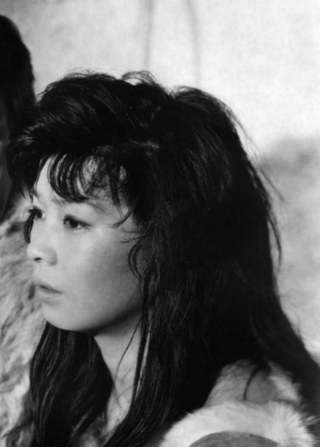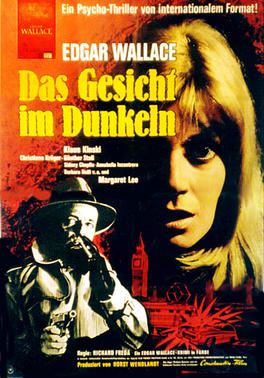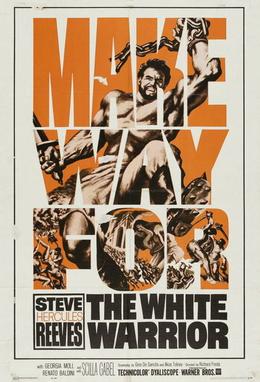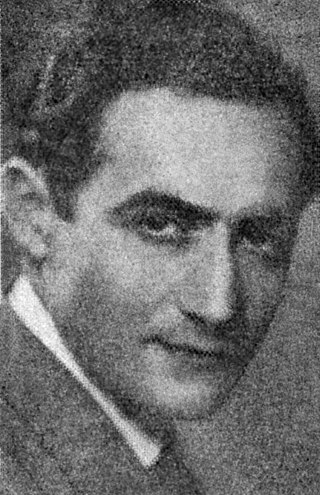
Maciste is one of the oldest recurring characters of cinema, created by Gabriele d'Annunzio and Giovanni Pastrone. He is featured throughout the history of the cinema of Italy from the 1910s to the mid-1960s.

Sword-and-sandal, also known as peplum, is a subgenre of largely Italian-made historical, mythological, or biblical epics mostly set in the Greco-Roman antiquity or the Middle Ages. These films attempted to emulate the big-budget Hollywood historical epics of the time, such as Samson and Delilah (1949), Quo Vadis (1951), The Robe (1953), The Ten Commandments (1956), Ben-Hur (1959), Spartacus (1960), and Cleopatra (1963). These films dominated the Italian film industry from 1958 to 1965, eventually being replaced in 1965 by spaghetti Western and Eurospy films.

The Horrible Dr. Hichcock is a 1962 Italian horror film, directed by Riccardo Freda and written by Ernesto Gastaldi. The film stars Barbara Steele and Robert Flemyng. Freda's The Ghost, the following year, features the same leads and the surname Hichock, but is not connected in terms of plot.

The Adventures of Marco Polo is a 1938 American historical adventure film directed by Archie Mayo and starring Gary Cooper, Sigrid Gurie, and Basil Rathbone. It was one of the most elaborate and costly of Samuel Goldwyn's productions.

Yoko Tani was a Japanese-French actress and vedette, who had a career in both Japanese and European cinema during the 1950s and '60s.

Double Face is a 1969 thriller film directed by Riccardo Freda and starring Klaus Kinski, Christiane Krüger and Annabella Incontrera. It is part of the series of Edgar Wallace adaptations made by Rialto Film.

Les Miserables is a 1948 Italian drama film directed by Riccardo Freda. It is based on the Victor Hugo's 1862 novel Les Misérables and stars Gino Cervi as Jean Valjean, Valentina Cortese as Fantine and Cosette, and Hans Hinrich as Javert. After the financial success of Freda's previous film The Black Eagle, Freda worked a deal with Lux Film and began developing an adaptation of Les Misérables with Mario Monicelli, Vittorio Nino Novarese and Stefano Vanzina. The film was shot entirely in Rome.

Kirk Morris is an Italian bodybuilder and actor, best known for his work in sword-and-sandal films.

The White Warrior is a 1959 adventure film directed by Riccardo Freda. It is loosely based on Lev Tolstoy's posthumously published 1912 novel Hadji Murat.

Carlo Innocenzi was an Italian composer.

The Black Eagle is a 1946 Italian historical adventure drama film directed by Riccardo Freda and starring Rossano Brazzi, Irasema Dilián and Gino Cervi. It was released as Return of the Black Eagle in the United States. The film is based on the unfinished 1832 Russian novel Dubrovsky by Alexander Pushkin (1799–1837). It was followed by a 1951 sequel Revenge of the Black Eagle, also directed by Freda.

Don Cesare di Bazan is a 1942 Italian historical adventure film directed by Riccardo Freda and starring Gino Cervi, Anneliese Uhlig and Paolo Stoppa. The film is set during the Catalan Revolt of the Seventeenth century. It is based on a play by Philippe Dumanoir and Adolphe d'Ennery. It marked the directoral debut of Freda who went on to be a leading commercial Italian filmmaker.

Sins of Rome is a 1953 historical drama film directed by Riccardo Freda and loosely based on the life story of Spartacus. The rights of film's negatives and copies were bought by the producers of Stanley Kubrick's 1960 film Spartacus, as to prevent eventual new releases of the film that could have damaged the commercial outcome of Kubrick’s film; this resulted in Sins of Rome's withdrawal from market for about thirty years.

Murder Obsession, a.k.a. Fear, is a 1981 Italian giallo-horror film directed by Riccardo Freda, and starring Laura Gemser and Anita Strindberg.

The Magnificent Adventurer is a 1963 adventure film directed by Riccardo Freda. It is loosely based on real life events of Benvenuto Cellini.

Gold for the Caesars is a 1963 peplum film starring Jeffrey Hunter and Mylène Demongeot. Originally planned as an American production, the film later became an Italian-French international co-production after the poor box office return of King of Kings. It was shot in Italy in 1962. The film is credited to Andre de Toth in the United States and both de Toth and Sabatino Ciuffini in Italy. Second unit director Riccardo Freda has claimed to have shot the entire film, while De Toth biographies make little input regarding his work on the film. Actress Mylène Demongeot has also backed up that Freda had taken charge on the films set.

Trapped in Tangiers is a 1957 spy film directed by Riccardo Freda and starring Edmund Purdom.
Luigi Carpentieri (1920-1987) was an Italian assistant director (1940-1949) and film producer (1947-1968). Together with Ermanno Donati, he founded the production company "Athena Cinematografica", which in 1960 became "Panda Cinematografica". All films produced by the company were genre films.
Ermanno Donati was an Italian film producer. Along with Luigi Carpentieri, Donati won the Nastro d'Argento award for Best Producer for the film The Day of the Owl.
Ornella Micheli was an Italian film editor active from the 1950s through the 1980s. She often worked on the exploitation films and thrillers of directors Lucio Fulci, Riccardo Freda, and Giuliano Carnimeo.
















